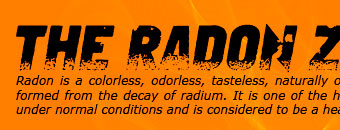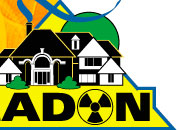 |
 |
 |
||||
|
||||||
| Call: 417-844-0942 | ||||||
|
»Airport Security Scanning This page describes the difference between the cabinet and backscatter x-ray scanning systems being used for airport security. Overview National security has become a top priority since the September 11, 2001 terrorist attacks on the United States. From armed guards to advanced screening devices, airports are a prime example of increased security measures in the U.S. The intense scanning of luggage and the newest technology to scan passengers are raising concern about radiation exposure from these security measures. Remember Do not confuse the backscatter system with metal detectors. Metal detectors do not use ionizing radiation. The cabinet x-ray system, used to scan luggage, is an enclosed system that uses shielding to keep radiation from exiting the walls of the unit. There is a strict standard on the amount of radiation that a cabinet x-ray system is allowed to emit. In addition, the standard also requires safety features that include warning lights, warning labels, and locks. The human x-ray scanner, called the backscatter system, is a scanning device that gives a security value matched only by a strip search. The risk from the backscatter x-ray is low, it offers a clear alternative to an intrusive strip search, and increases the chance of catching a threat to airport security. Do not confuse the backscatter system with metal detectors. Metal detectors do not use ionizing radiation. Who is protecting you U.S. Department of Homeland Security (DHS), Transportation Security Administration (TSA) TSA monitors the x-ray screening machines that examine carry-on luggage. Additionally, TSA trains screeners how to perform their job efficiently while minimizing everyone’s exposure to radiation from the machines. U.S. Food and Drug Administration (FDA) FDA has responsibility for assuring manufacturers produce x-ray systems that do not pose a radiation safety hazard. Safety regulation is divided between FDA and state regulatory agencies with the FDA typically regulating the manufacturer. FDA requires that all machines be properly calibrated and maintained. The States Safety regulation is divided between FDA and state regulatory agencies with the states regulating the use of the products. U.S. Environmental Protection Agency (EPA) EPA issues general radiation guidance to other federal agencies that establish appropriate safety limits. What you can do to protect yourself The risk from the backscatter x-ray is low, it offers a clear alternative to an intrusive strip search, and increases the chance of identifying a threat to airport security. Additionally, you can ask for confirmation that the technician operating the machine is qualified to do so and that the machine itself has been recently inspected and is properly calibrated. If you are still concerned about the radiation, ask if you can receive a pat down or strip search instead. |
|
|||||